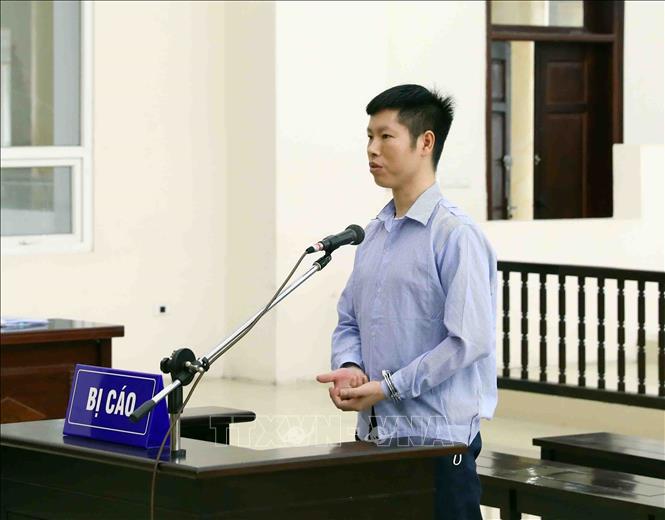Labor update: National Assembly discusses the Trade Union Law
On the morning of June 18, 2024, the 7th sitting of Vietnam’s 15th National Assembly discussed the draft amended Trade Union Law. The Law is an amended version of the 2012 Trade Union Law and legislates the role of Vietnam’s only legal trade union confederation, the Party-led Vietnam General Confederation of Labor (VGCL). This draft law is expected to be passed into law at the National Assembly’s 8th sitting, in October this year.
One of the main reasons that Vietnam labor watchers have been interested in the amended Trade Union Law is because, as previously explained by Project88, it legislates the role of the VGCL in the new context of (some) freedom of association. The 2019 Labor Code – a separate document to the Trade Union Law – which became law in January 2021, contains some freedom of association reforms. Chapter XIII of the Code allows for independent “worker organizations” (WOs), not affiliated to the VGCL. Worker organizations are not unions (the only legal unions are still the VGCL’s unions) and are more limited in what they can do compared to unions, but this is the first time in the modern era that any freedom of association has been allowed under Vietnamese law. However, WOs cannot yet exist in practice. The Labor Code states that many aspects of WOs, including basic procedures for registering them, are to be further regulated. This requires an implementing decree, which has been delayed until now. It is finally expected later this year.
Since WOs are not unions, the Trade Union Law does not cover them, but it does legislate the role of trade unions (i.e. VGCL unions) vis-a-vis WOs. The main tension in this regard has been the draft Trade Union Law articles on union funding and finances. As will be seen, there are some major issues with the articles on the management of trade union finances which breach fundamental rights to freedom of association and assembly, leaving the VGCL in a much more powerful position, both financially and politically, than WOs.
The VGCL
The VGCL is not a trade union confederation in the sense that many would understand it, as it is subordinate to the ruling Communist Party. Frank Hoffer, writing about the Chinese trade union federation (similar to Vietnam’s, as it is also a Party-led union in a one party state with no freedom of association), describes it as “a government agency sailing under a false name” that has “nothing in common with a trade union except the name.” He explains that a “trade union is an organisation of workers, by workers, for workers; an organisation where workers democratically elect their leadership and independently define their policies and actions. It is an organisation independent from employers and governments.” The Chinese union “fails by all these criteria.”
The same can be said of the VGCL, as previously explained by the Project88. It is subordinate to the Party at the national level and often to employers at the workplace level. The top leadership is not elected by members but appointed by the Party.
Despite this, there was a period in recent history, from around 2012-2019, in which the VGCL (and the Ministry of Labor, Invalids and Social Affairs, MOLISA) undertook substantial efforts at reform. These were driven by an effort to reduce strikes, which exploded in 2011, with nearly 1000 recorded strikes that year, and remained high for most of the 2010s. Another factor driving reforms was the desire to be part of trade deals, such as the EU-Vietnam Free Trade Agreement (EVFTA) and the Trans-Pacific Partnership (TPP)/Comprehensive and Progressive Agreement for Trans-Pacific Partnership (CPTPP), which contained labor commitments. VGCL reform efforts during this period included attempts to be more genuinely representative of workers through experiments with bottom-up grassroots organizing, improved collective bargaining– including multi-employer bargaining, and pushing for pro-labor policy change at the national level, such as a reduction in standard working hours. VGCL reformers were in key positions for much of this period, so they were able to push reforms. Optimists hoped that the freedom of association reforms in the 2019 Labor Code (see below) would further push the VGCL to be more reformist and representative of workers.
For a while this seemed plausible. The 2012-2019 reform period, however, is now decisively over. Strike numbers have fallen substantially, and trade deals have been completed, so these two key pressures for reforms have waned. The Party has appointed cadres into top VGCL leadership positions who have no labor background but rotate around various political roles. The significant closing of civil society space, as directed by Directive 24, has also been felt within Party-led civil society. VGCL reformers have been sidelined. Vu Minh Tien, the head of the VGCL’s policy and legal affairs department, has been arrested. In that position, Tien was key to the draft Trade Union Law which is now being debated. This arrest followed the arrest of Nguyen Van Binh, head of the MOLISA’s Legal Department, who would also have had substantial input into the draft law and was one of the key people pushing for labor reforms in Vietnam.
Taken at face value, much of the law seems fairly unremarkable, dealing with technical matters of internal bureaucracy and staffing. Other parts seem to be progressive — or at least would be if the VGCL was a real, independent trade union — such as Article 5 explicitly allowing informal, self-employed workers to form, join and participate in trade unions; the 2012 Trade Union Law did not say this, although in practice, the VGCL has been recruiting informal workers into labor associations for many years. There is also a possible clause in the same article that would, for the first time, allow foreign nationals to join trade unions.
VGCL finances
Currently, the main sources of VGCL income are: union dues paid by members; state subsidies; revenues from various activities; and trade union funds paid by all enterprises, whether or not they have a union, equivalent to 2% of the enterprises’ basic wage bill.[1] One of the key issues being discussed is which organizations receive the trade union funds (the 2% paid by enterprises) in enterprises where independent, non-VGCL-affiliated WOs exist.
The draft Trade Union Law presents two options. The first option simply says that in places where enterprise-level WOs already exist, trade union funds will be distributed to them and enterprise-level trade unions, but that this issue will be further detailed by the Government in consultation with the VGCL– in essence largely dodging the issue and kicking the can down the road.
Option 2 is more detailed. It says that 25% of these trade union funds will be managed and used by upper level trade unions (that is, VGCL offices higher than the enterprise level). The remaining 75% will be distributed to enterprise-level trade unions and WOs in the following ways:
- Where only enterprise-level trade unions exist, they will be allocated all the funds.
- Where only WOs exist, they will be allocated funds based on how many members they have as a proportion of the overall workforce.
- Where both enterprise-level trade unions and WOs exist, WOs will be allocated funds based on how many members they have as a proportion of the overall workforce, and trade unions will get the rest.
- Where neither enterprise-level trade unions nor WOs exist, upper level trade unions will hold all of the funds to make payments to workers at the enterprises and allocate the remaining funds to enterprise-level trade unions and WOs once they are established.
The June 18 National Assembly discussion of the draft Trade Union Law largely focused on the finances section of the law.[2]
VGCL finances, WOs, and freedom of association
Beyond what was largely presented as a technical discussion at the National Assembly, there are some major issues with the articles on the management of trade union finances which breach fundamental rights to freedom of association and assembly. Firstly, VGCL trade unions are the default recipients of these funds, while WOs only get a proportion based on their membership. Upper level VGCL trade unions get to keep 25% of the trade union funds no matter what, even if there is no trade union at the enterprise. The remaining 75% is split between enterprise-level trade unions and WOs, but also unfairly; WOs only get a proportional amount based on their membership, while trade unions get the rest (or all of it, if there is no WO), without regard to how many members they have.
Secondly, where there is no trade union or WO, upper level VGCL trade unions keep all the funds until trade unions or WOs are established– the upper level VGCL trade unions are then supposed to transfer the amounts to trade unions and WOs. Consequently, if a WO is established at an enterprise where previously no WO or trade union existed, the distribution of funds to WOs are managed by upper level VGCL trade unions– meaning that independent, non-VGCL-affiliated WOs rely on the VGCL to manage and transfer their allocations of the trade union fund. In other countries with real freedom of association, no trade union would accept a rival union managing and allocating their finances; it would be rightly seen as an unacceptable interference into internal organizational and administrative matters.
Thirdly, the draft Trade Union Law also lists other sources of funding for trade unions, as did the previous Trade Union Law. One of these is subsidies from the State. Such subsidies can be substantial. WOs will almost certainly not be entitled to them, given repeated statements from government leaders about how the VGCL is a Party organization and part of the political system, and that the state will therefore always support the VGCL. Explicitly established in law, then, is the fact that trade unions receive state financial support– while WOs will not.
To fully grasp the comparative strength of trade unions vis-a-vis the VGCL, one would need to see the implementing decree providing more details about WOs and what they can do. This is yet to be released, but is expected later this year. The draft amended Trade Union Law, however, does not set the stage for a fair distribution of finances– leaving the VGCL, the “government agency sailing under a false name” to steal Hoffer’s words, in a much more powerful position, both financially and politically, than WOs.
© 2024 The 88 Project
Photo: A strike in Binh Duong province in June 2020
[1] This 2% level has in the past been a subject of internal government and Party debate with regard to whether it is too high.
[2] A report from the National Assembly’s Social Affairs Committee, presented on June 3, recommended option 2. The Committee also suggested, among other things, that the Law should say that upper level trade unions should keep a maximum of 25% of the funds, so in some circumstances this could be lower. In advance of the full National Assembly discussion on June 18, there had been a smaller group discussion, on June 8. During the June 8 discussion, there were also many contributions regarding whether the 2% paid by enterprises should be maintained at the same level and about needing to be clear and transparent with regard to how these funds are used. The full National Assembly discussion on June 18 was wide ranging, but one focus was also on financing, around the 2% paid by enterprises and what percentage should be kept by upper level trade unions.










